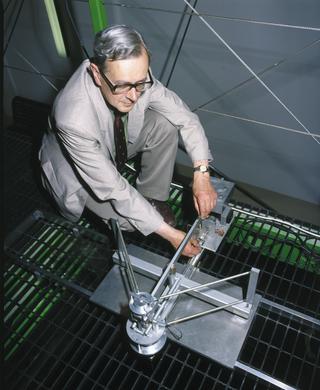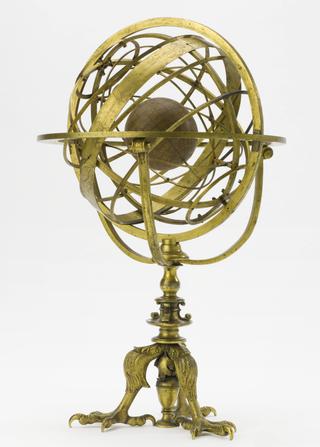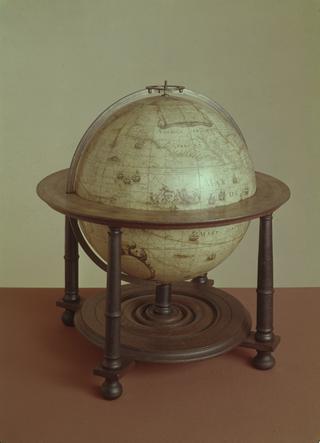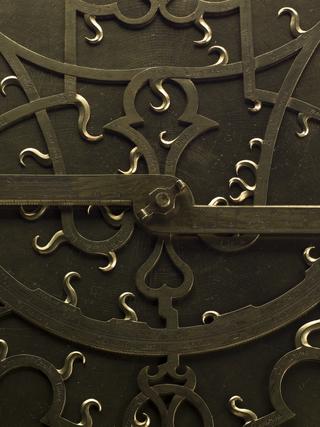
Patent model in brass of a pantoscope, invented by Charles Emmanuel of Paris, patented in America [Patent No. 45,954 January 17, 1865] and made by T. Auvray, Paris.
This is a model of an Emmanuel patent pantoscope. In the USA each patent applicant had to furnish a model of their invention 'of a convenient size to exhibit advantageously its several parts'. Between 1840 and 1880 about a quarter of a million models were deposited at the US Patent Office building in Washington, D.C. This pantoscope is an American patent model from 1865. Although devised by a Frenchman, Charles Emmanuel of Paris, it illustrates the American tendency at the time to combine more than one instrument. The pantoscope allows the user to locate the position of a heavenly body in relation to each of the three principal co-ordinate systems, namely, the user's horizon, the celestial equator, and the Sun's path, which is known as the ecliptic. The lower part of the instrument consists of a base containing a spirit level and a compass to align it vertically and horizontally. The inclination of the circle above this base can be altered. This inclination is shown on the arc. If the circle is horizontal with the upper one vertical then the instrument acts as a theodolite, showing the position of the body with respect to the user's horizon. If the circle is inclined at 23.5 degrees it acts as an ecliptic instrument showing the position of the body with respect to the Sun's path. If it is inclined at the angle of latitude of the observer it shows the body's position with respect to the celestial equator.




